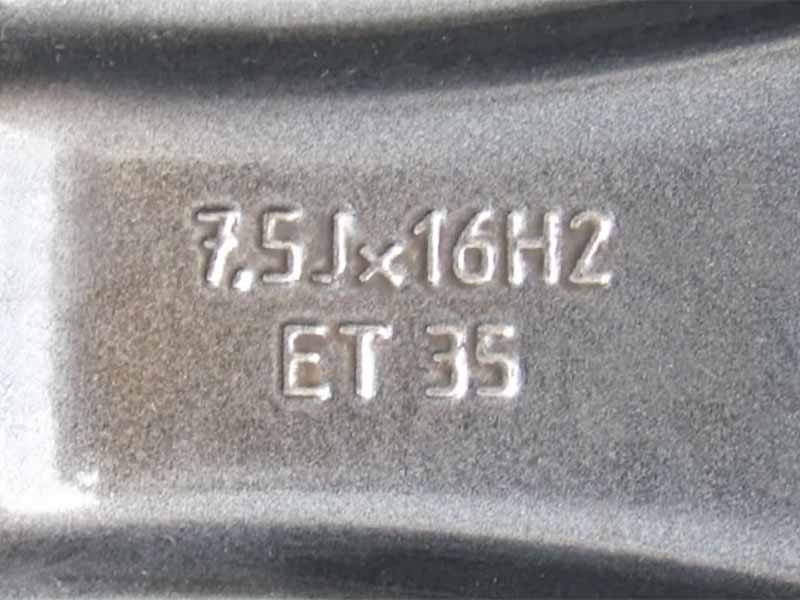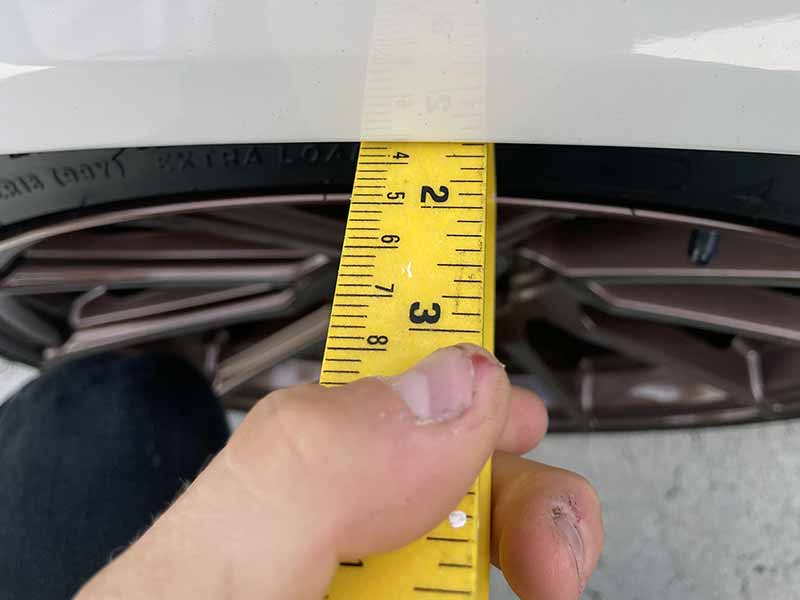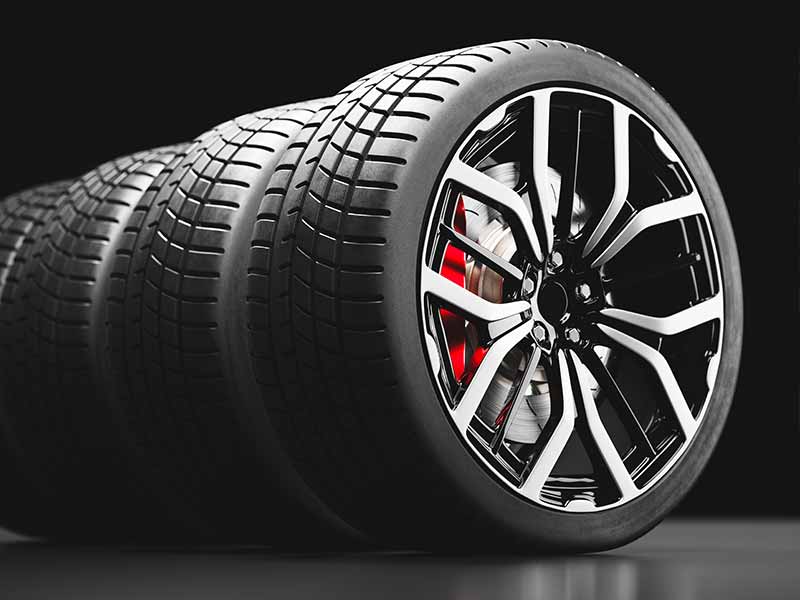Ever found yourself staring at your car’s wheels, wondering what size those rims are? You’re not alone. Whether you’re looking to replace your tires, upgrade your rims, or just satisfy your curiosity, knowing your rim size is essential. This isn’t just about numbers; it’s about ensuring your ride is safe, efficient, and looking its best.
How To Tell What Size Rims You Have
To determine the size of your rims, you can easily check the tire sidewall for a series of numbers and letters indicating the diameter, or measure the rim manually from edge to edge across the center.
In this article, we’ll guide you through the steps to identify your wheel diameter, width, and offset (backspacing), and explain why these measurements are crucial for your vehicle’s performance.
Understanding Rim Dimensions
When it comes to wheels, there’s more than meets the eye. Sure, they keep your ride rolling, but the specifics of their size – diameter, width, and offset – play a huge part in how your car or truck performs. Let’s break it down.
Rim Diameter
- What It Is: Simply put, rim diameter is the distance across the wheel. It’s the ‘size’ most people refer to when they talk about wheel size.
- Why It Matters: Getting the diameter right is crucial. It determines the size of tire you’ll need and affects aspects like speedometer accuracy and vehicle handling.
- Common Sizes: For passenger cars, diameters typically range from 14 to 19 inches, while trucks might have rims up to 22 inches or more.
Wheel Width
- Definition: This is the distance between the inner and outer faces of the wheel. Think of it as the ‘thickness’ of your rim.
- Impact: Width influences tire fitment and stability. Too narrow or too wide, and you might face tire wear or handling issues.
- Measurement Tips: It’s usually measured in inches, and you’ll find most passenger car rims between 6 and 10 inches wide.
Offset (Backspacing): The Balancing Act
- Understanding Offset: It’s the distance from the wheel’s mounting surface to the centerline of the rim. It determines how the wheels and tires sit in relation to the vehicle’s body.
- Why It’s Important: The right offset ensures that your wheels have enough clearance from suspension components, don’t rub against the body, and provide optimal handling characteristics.
- Types of Offset:
- Positive: The mounting surface is closer to the front (street-facing side) of the wheel.
- Negative: The mounting surface is more towards the back (vehicle-facing side) of the wheel.
- Zero: The mounting surface is dead center.

How to Find Your Rim Diameter
Knowing your rim diameter is like knowing your shoe size – it’s essential for a perfect fit. But don’t worry, you don’t need to be a mechanic to figure it out. Here’s how you can do it easily.
Locate the Diameter Measurement
- Check the Tire Sidewall: The easiest way to find your rim diameter is to look at the tire’s sidewall. You’ll see a series of numbers and letters, something like ‘P215/65R15′. The ’15’ at the end? That’s your rim diameter in inches.
- Why It’s Reliable: This method is almost foolproof because tires are specific to rim sizes. If you’ve got the original tires on, this number is what you need.
When Markings Aren’t Visible
- Measure Manually: If the tire sidewall isn’t helping, grab a tape measure. Measure the distance from one edge of the rim (inside the tire bead) to the opposite edge. This is your diameter.
- Tips for Accuracy:
- Make sure to measure from the inner edges, where the tire bead sits, not the outer edges.
- Measure across the center for the most accurate reading.

Determining Wheel Width
Width is more than just a number – it’s about ensuring your tires and rims are a match made in automotive heaven. Let’s get into how you can measure your wheel’s width.
Find the Width Measurement on the Rim
- Look for Markings: Often, the wheel width is stamped on the back of the rim. You might find something like ‘7Jx16’. In this case, ‘7’ indicates the width in inches.
- Why It’s Useful: These markings are provided by the manufacturer, making them a reliable source of information.
Understanding Width Markings
- Decoding the Numbers: The width is usually the first number in a series, measured in inches. It’s crucial for determining the right tire size for your rim.
- Fitment Implications: The right width ensures proper tire seating, affecting handling and wear.
Measuring Rim Width Manually
- How to Measure: If you can’t find the markings, measure the distance between the inside edges of the rim flanges (where the tire bead sits).
- Measurement Tips:
- Use a straightedge and ruler for the most accurate measurement.
- Ensure you’re measuring the inside width, not the overall width of the rim.
Wheel Offset Comparison Calculator
Understanding and Measuring Wheel Offset (Backspacing)
Wheel offset isn’t just a technical term; it’s what ensures your wheels sit just right on your car or truck. Let’s unravel this crucial aspect.
What is Wheel Offset?
- Defining Offset: It’s the distance from the wheel’s mounting surface (where it attaches to the vehicle) to its centerline. Offset is key to how your wheels and tires align with your car’s body.
- Offset Types:
- Positive Offset: The mounting surface is towards the front of the wheel.
- Negative Offset: The mounting surface is towards the back.
- Zero Offset: The mounting surface aligns with the centerline.
The Significance of Offset
- Why It Matters: Proper offset ensures adequate clearance from suspension components, prevents tire rubbing, and maintains optimal handling.
- Vehicle-Specific: The right offset varies between vehicles, so it’s not a one-size-fits-all measurement.
How to Measure Wheel Offset
- Tools You’ll Need: A straight edge and a ruler or caliper.
- Step-by-Step Guide:
- Place the Wheel Face Down: Ensure it’s secure and level.
- Measure the Overall Width: From one outer edge to the other.
- Find the Centerline: Divide the overall width by two.
- Measure from the Mounting Plate to the Outer Edge: This is your offset.
- Calculating Offset:
- If the mounting plate to the outer edge measurement is less than half the overall width, it’s a positive offset.
- If it’s more, it’s a negative offset.

The Importance of Accurate Rim Measurements
Just like getting the right fit in a pair of shoes, accurate rim measurements are crucial for a smooth and safe drive. Let’s explore why getting these dimensions right is not just a matter of numbers.
Implications of Incorrect Rim Size
- Tire Wear: Incorrect rim size can lead to uneven or accelerated tire wear.
- Handling and Stability: The wrong size can negatively affect handling, making your vehicle less stable and more challenging to control.
- Safety Concerns: In extreme cases, improper rim size can lead to tire blowouts or loss of control.
Impact on Vehicle Performance
- Speedometer Accuracy: An incorrect rim diameter can throw off your speedometer readings. This happens because the wheel’s circumference changes, affecting how far you travel with each rotation.
- Fuel Efficiency: Believe it or not, the wrong size can also impact your vehicle’s fuel efficiency due to changes in rolling resistance.
Ensuring the Right Match
- Vehicle Specifications: Always refer to your vehicle’s manual or manufacturer guidelines for the recommended rim size.
- Professional Advice: When in doubt, consult with a tire or automotive expert. They can provide insights specific to your vehicle model.
Resources
Below are some links you may find helpful when learning about tires:
Final Thoughts
From the diameter that affects your speedometer’s accuracy to the width and offset impacting handling and tire wear, each measurement plays a pivotal role.
Remember, regular checks and understanding these specs are key to a well-maintained vehicle. And if ever in doubt, don’t hesitate to consult a professional for precise measurements and advice.
Good luck and happy motoring.




